Features
In spite of the cold wind, curiosity and the sunshine won out as students from Pender Harbour Secondary School gathered on the dock of the Backeddy Marina to view a multitude of marine creatures.
For over two hours the Coastal Environmental Stewardship class with teacher Jay Wall and Iris Griffith Centre education coordinator Lee-Ann Ennis worked with divers Jim Rossi and Bruno Pepin.
As the divers brought various creatures and plant life up to the surface, students met them, scooped up the specimens and carried them to holding tanks where they took turns identifying and cataloguing each specimen. An amazing number of specimens were catalogued including starfish, anemones, kelp and a very large ling cod. The baby red octopus seemed to get the most attention with many of the students taking turns to gently hold it.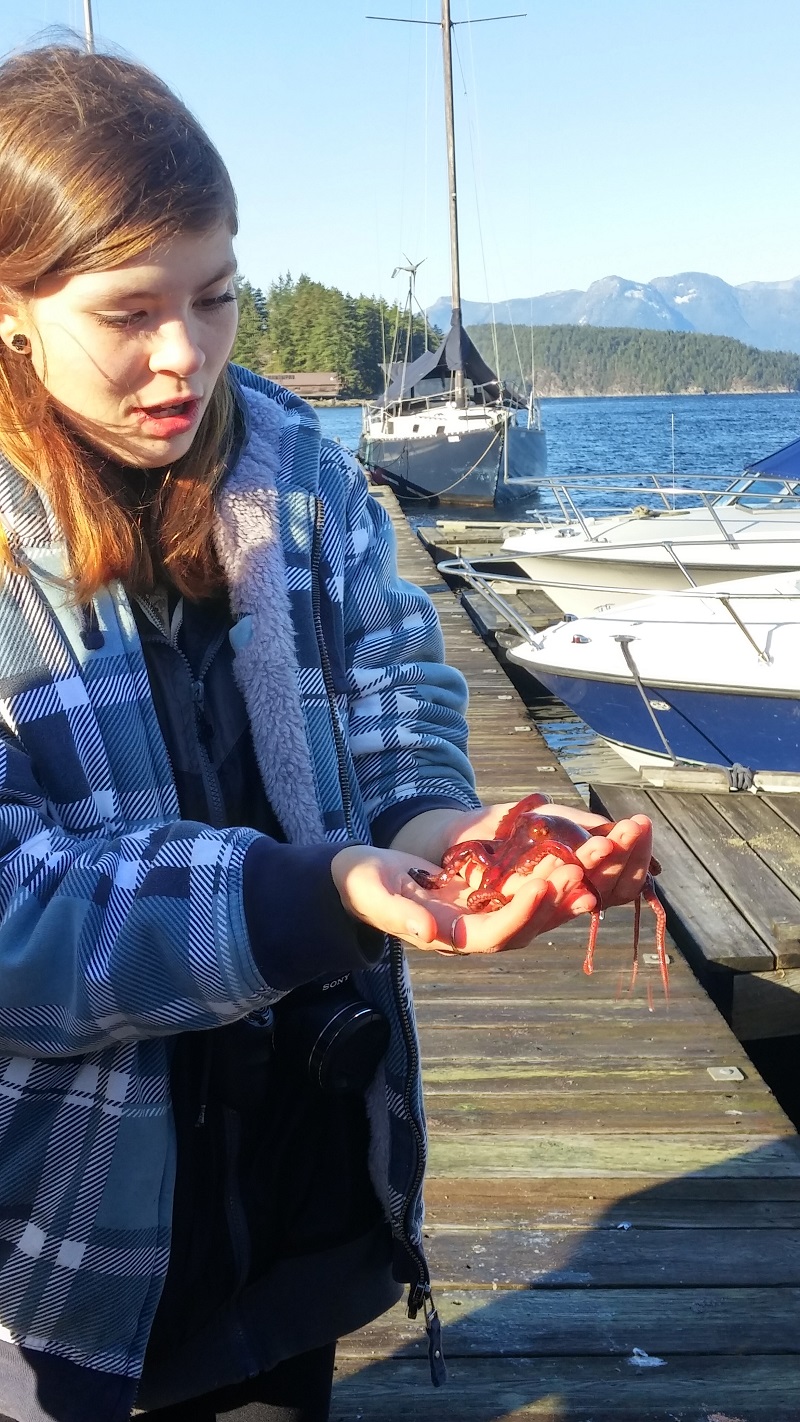
Diver Jim Rossi explained that this was one of his favorite shoreline diving spots because of the variety of sea life. There is so much food available here that the area atttracts a large number of creatures.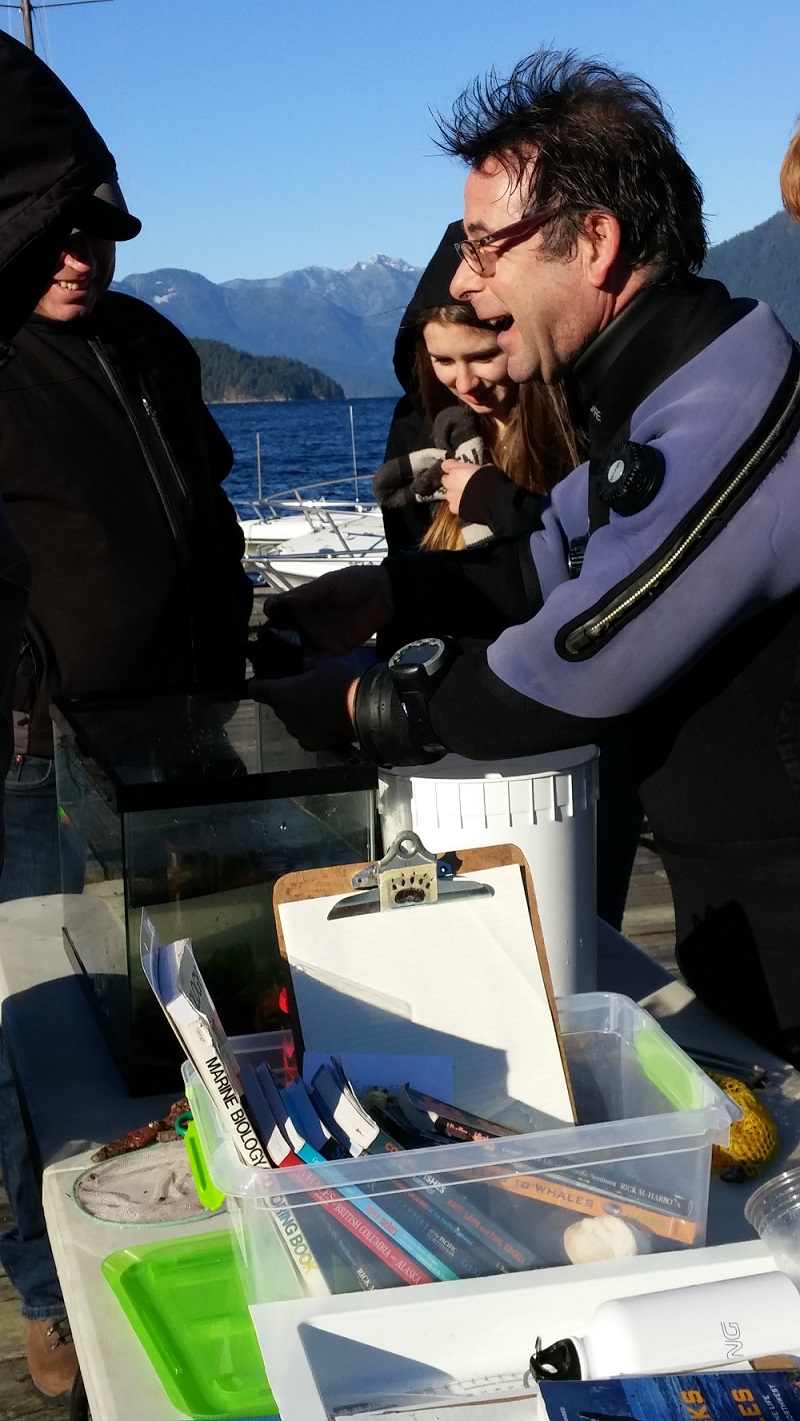
Most of the students said they took the class because they were curious and wanted to learn more about the local environment and have a hands-on experience. A field trip away from the classroom was another plus.
This is the second year for the science class developed by Walls. He explained he wanted to teach a class that gave the students a chance to experience nature and science. "I want to let them have a look at what scientists really do in the field," he said. "This way they can get a better understanding at what a career in the sciences could mean for them."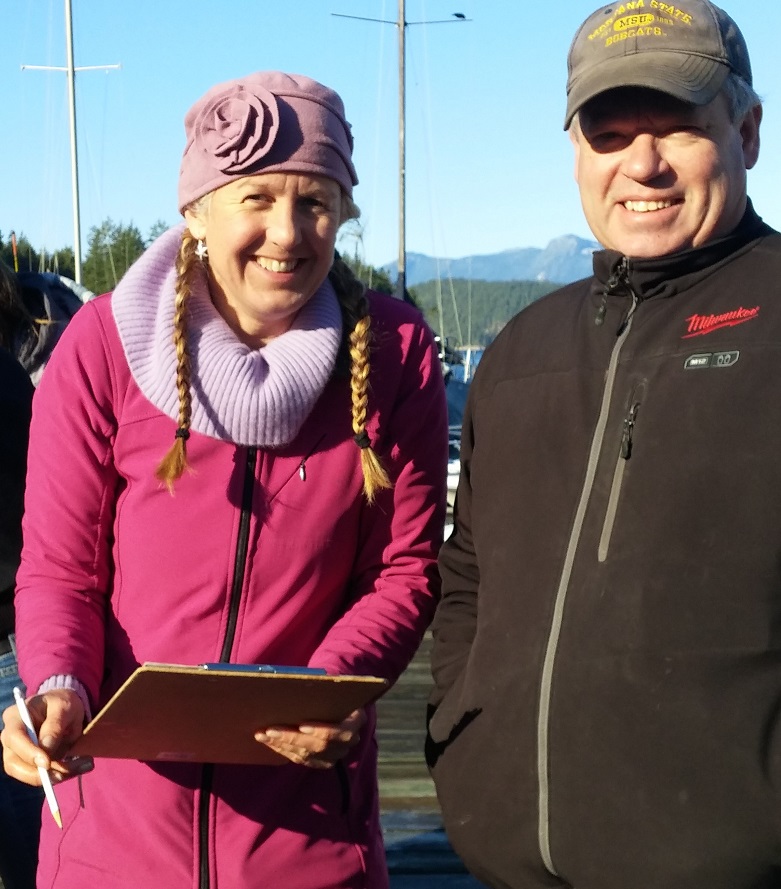 L to R: Jim Rossi with class; Lee-Ann Ennis and Jay Walls; the facinating red octopus; specimens are brought in for identification and Bruno Pepin brings up a large ling cod.
L to R: Jim Rossi with class; Lee-Ann Ennis and Jay Walls; the facinating red octopus; specimens are brought in for identification and Bruno Pepin brings up a large ling cod.
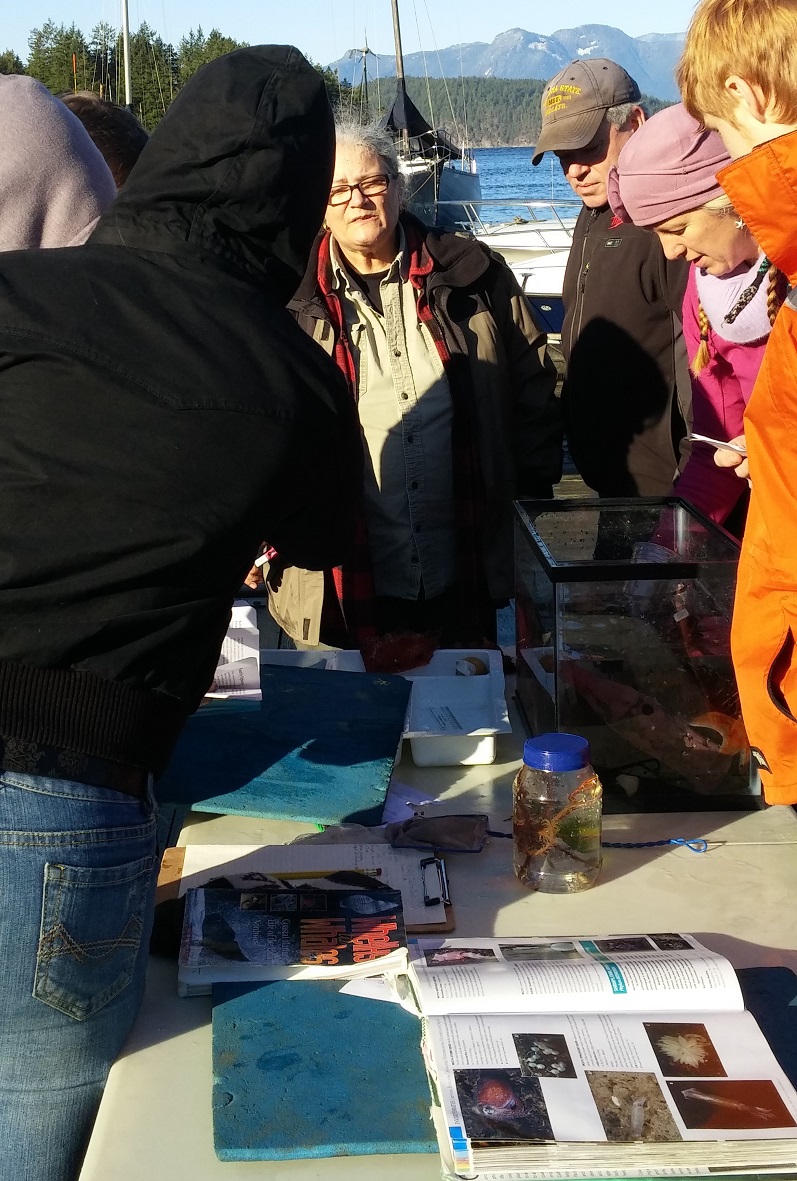
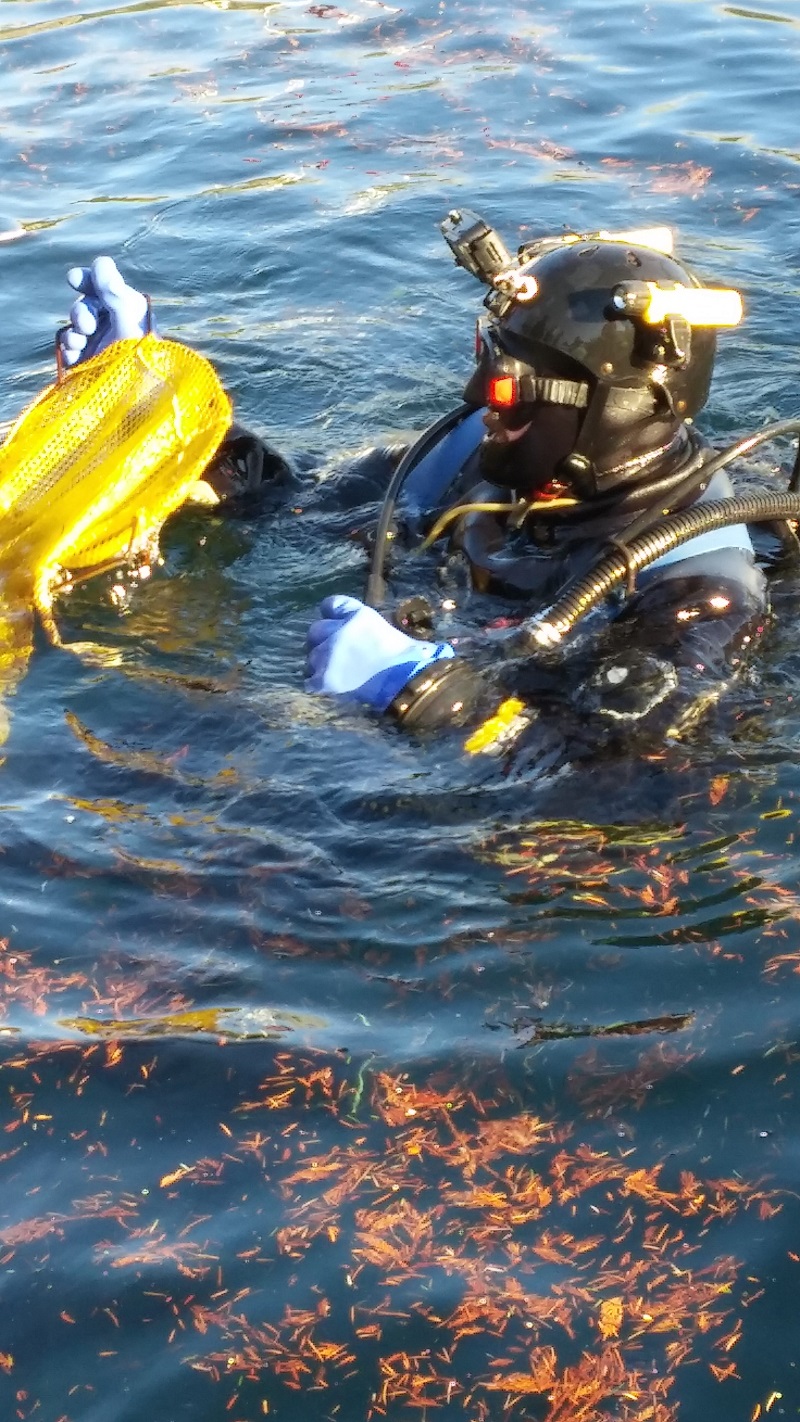
After returning all the specimens to the water, the group met for lunch, a discussion of the mornings finds and received some fun gifts from Lee-Ann and the Iris Griffith Centre.
The days' tally included:
California sea cucumber, Parastichopus californicus
Red sea urchin, Strongylocentrotus franciscanus
Green sea urchin, Strongylocentrotus droebachiensis
Pink star, Pisaster brevispinus (large)
Sunflower star, Pycnopodia helianthoides (small < 7 cm)
Leather star, Dermasterias imbricata (smelled like garlic when rubbed)
Rose star, Crossaster papposus (looks like small sunflower star)
Spiny red star, Hippasteria spinosa (six arms)
Vermillion star, Mediaster aequlis (six arms?)
Slime star, Pteraster spp?
Crinoids, also known as 'Feather stars, or Sea Lilies' (10 feathery arms, 'living fossils')
Stalked hairy sea squirt, Boltenia vilosa (Class Ascidiacea free swimming larval stage have a notochord)
Plumose anemone, Metridium farcinum
Brooding anemone, Epiactis prolifera
Turkish towel, Chondracanthus spp.
Pyropia, Porphyra spp. (Nori, sushi paper)
Sugar kelp, Saccharina latissima
Bull kelp, Nereocystis leutkeana
Kelp Lacy Bryozoan, Membranipora spp?
Coraline algae or Encrusting hydrocorals on glass bottles?
Puget Sound King Crab, Lopholithodes (only partial carapace found)
Oregon Triton, Fusitriton oregonensis
Leafy hornmouth, Ceratastoma foliatum (with unidentified hermit crab)
Amphipod (hitchiker)
Orange finger sponge, Amphilectus rigida (with Leopard dorid nudibranch)
Leopard dorid nudibranch, Diaulua sandiegensis (eats finger sponge)
White dorid, Aldisa tara
Giant Red Dendronotid, Dendronotus rufus (to 28 cm)
Golden dirona, Dirona pellucida
Orange peel nudibranch, Tochuina tetraquetra
Moon Jellyfish, Aurelia labiata
Lingcod, Ophiodon elongatus (volunteer!)
Giant Pacific Octopus, Enteroctopus defleini (juvenile, otherwise its a Red Octopus, O. rubescens.
